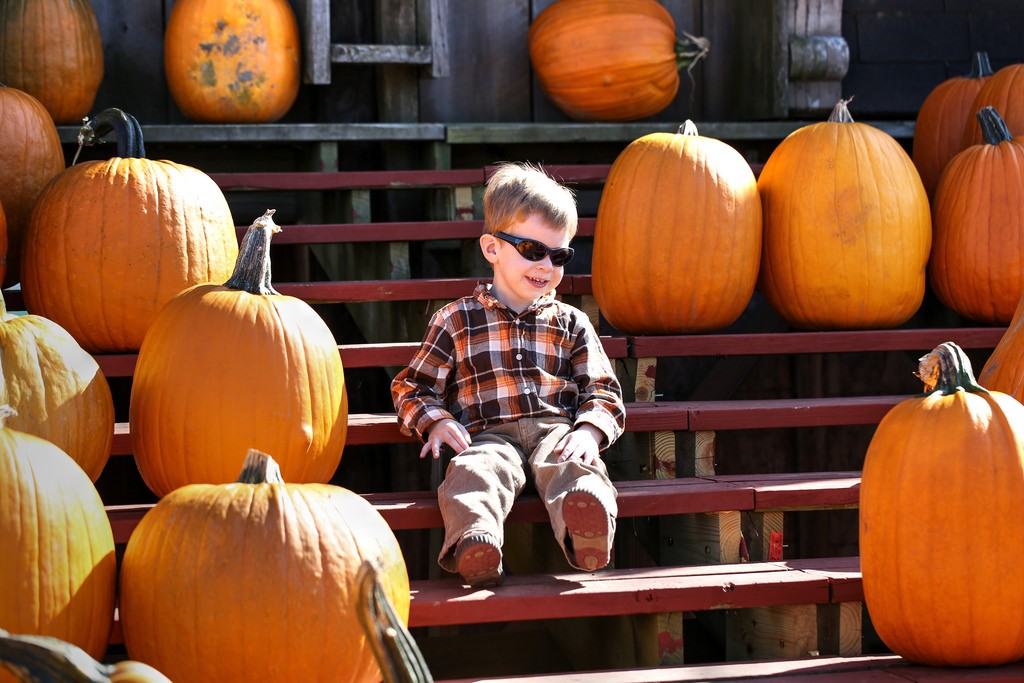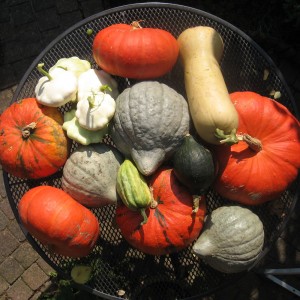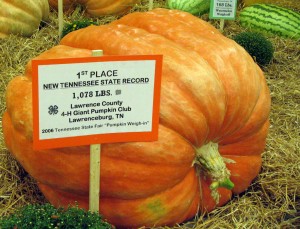The Great Pumpkin and better pumpkins

Great pumpkins. Great for jack-o-lanterns, but you might want to aim a little smaller for for great eating. Photo: Lee Ruk, Creative Commons, some rights reserved
Linus, the precocious, blanket-toting “Peanuts” character, waited faithfully for The Great Pumpkin all night on Halloween in spite of being disappointed every year. Perhaps his unwavering belief in the mythical pumpkin was spurred on by the fact that almost every year brings the world a bigger “great pumpkin” of the sort one can measure and—at least potentially—eat.
Of the approximately 1.5 billion pounds of pumpkins grown annually in the United States, only a very few are grown for size. Primarily within the last thirty years, giant pumpkin enthusiasts (that’s regular-size people, giant produce) have developed varieties that attain jaw-dropping proportions. From a nearly 500-lb. world record in 1981 to a half-ton in 1996 to the recent 2,096-lb. world champion, today’s giant pumpkins would be a dream come true for Linus.
Being the scholarly lad he was, Linus probably knew pumpkins are actually a type of winter squash, one of many varieties first selected for and cultivated by Native Americans. Squash, in fact, is an Algonquin word adopted by Europeans. We chose the Greek-based term “pumpkin” to describe the ribbed orange variety, mostly because “The Great Squash” didn’t have the right ring to it.

A mix of squash varieties sized for the table. Photo: Ard Hesselink, Creative Commons, some rights reserved
The Hubbard squash and small hard pie pumpkins we grow today are among the many squash types the Iroquois were raising in this area at the time of first European contact. The Iroquois would dry strips of pumpkin and squash for use in late winter after the storage life of whole squashes had run its course. If the old-time Iroquois had dehumidifiers and thermostats, their pumpkins and squash could have lasted all winter.
Successful storage actually begins in the field or garden. Your pumpkins and squash will last longer if you bring them in before the first hard frost (below 29F). Always pick them up supported from the bottom and never carry them by the stem; if that breaks, rot will set in. For pumpkins, a 10-day hardening-off treatment of 80-85F at 80 percent humidity will help harden the rind and prolong storage life. This treatment isn’t necessary for butternut, turban, and Hubbard, and will actually harm acorn squash.
In terms of storage conditions, the critical numbers are 50 and 70–never cooler than 50F or more humid than 70 percent. The ideal numbers are 60F and 60 percent—pretty easy to remember. Store pumpkins and squash away from apples, which produce ethylene gas that will hasten ripening and shorten storage life. Check stored squash every few weeks, as one rotten one can spread decay to others.
Under ideal conditions acorn squash will store for 5-8 weeks. Pie pumpkins, as well as butternut and buttercup squash, can go through the winter, and it’s not unheard of for a Hubbard to last into the following summer. Because the record-breaking pumpkins of today have Hubbard genetics, I’d expect they could last quite a while. But who’s going to build a storage room around a one-ton pumpkin?

This 1000-pounder at the Tennessee State Fair is puppy chow compared to the world record holder. Photo: Brent Moore, Creative Commons, some rights reserved
At the 2015 giant pumpkin contest at Wisconsin’s annual Cedarburg Festival, farmer Gene McMullen broke a world record for America’s largest pumpkin ever grown. McMullen’s monster pumpkin weighed in at 2,145 pounds. At this time the world record is 2,323 pounds set in 2014 by Swiss grower Beni Meier at a contest in Germany. There are other domestic pumpkin weigh-offs still to come this fall, so farmer McMullen could still be bested this year. If you want more information on yearly pumpkin weights, go to www.bigpumpkins.com for a state-by-state listing.
It seems little Linus may have predicted this agricultural overachievement fifty-some years ago. Maybe I should revisit those old comics to read what else the child philosopher had to say.
Paul Hetzler is a horticulture and natural resources educator with Cornell Cooperative Extension of St. Lawrence County.





.jpg)

